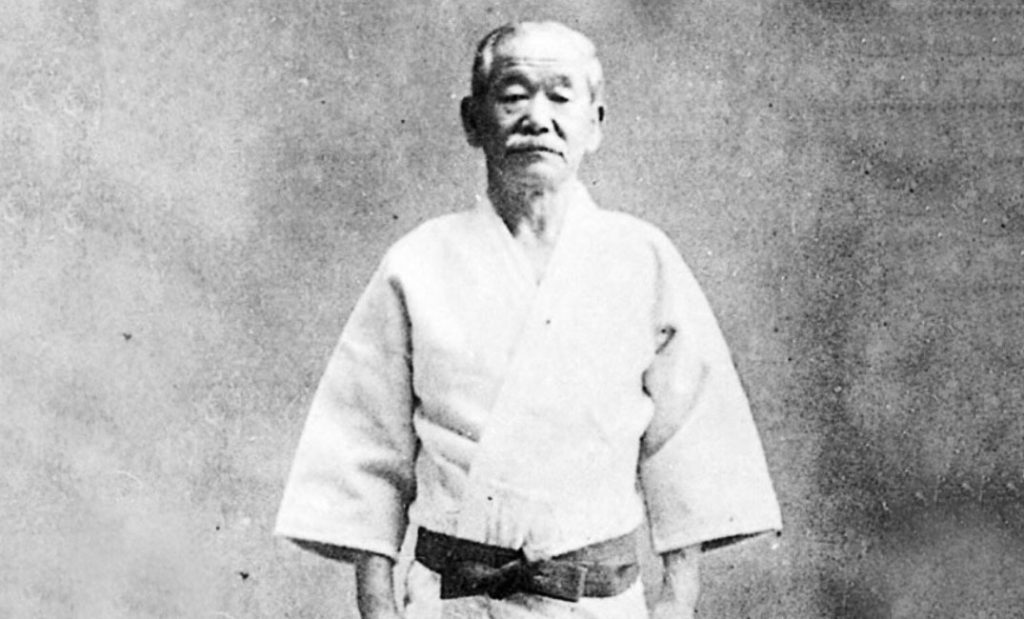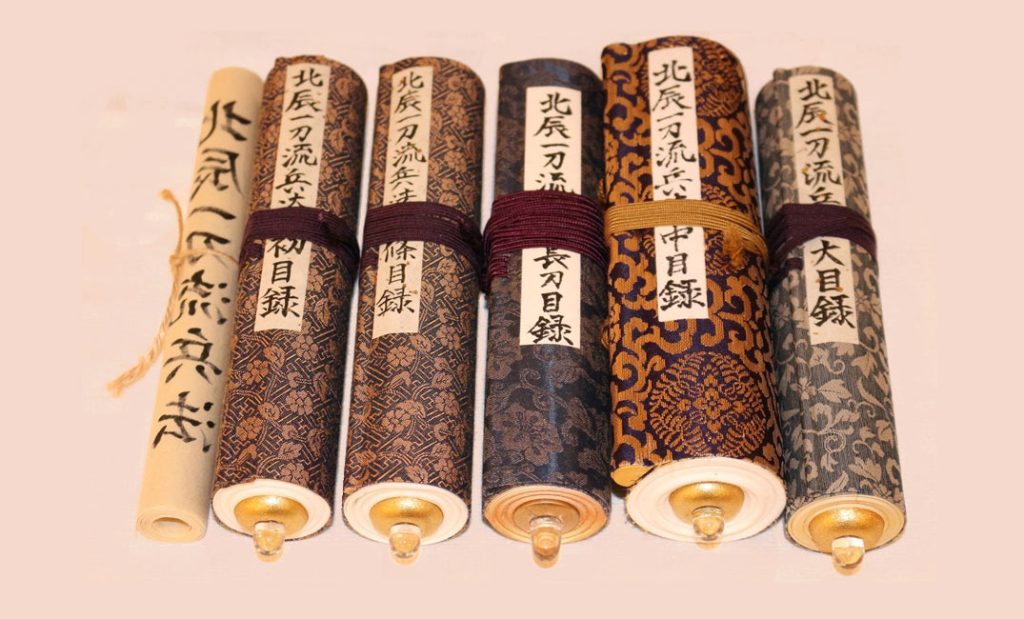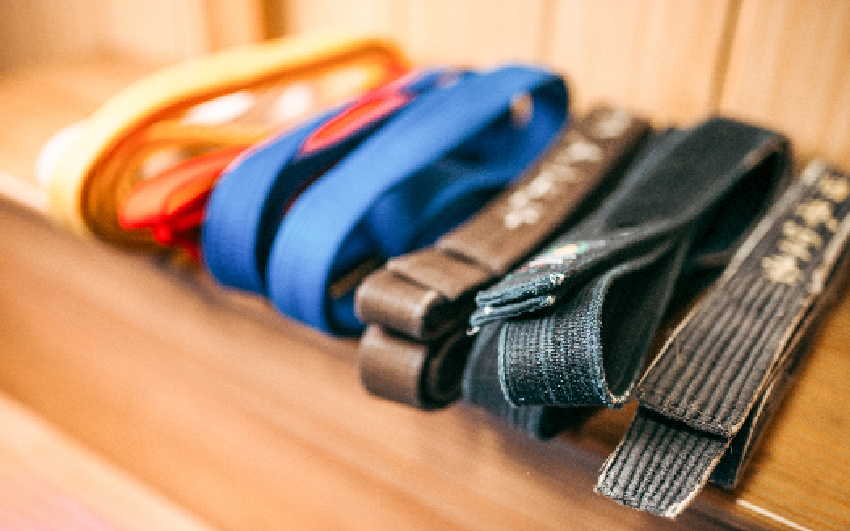What is the order of belts in Karate?
Learn more about the colored belt system of Karate.
Karate is a martial art with an ancient and rich history. However, there is one component of the art that is relatively new — the belt system. While Karate practitioners have been studying the art for hundreds of years, their progress has only been graded with the kyu/dan system since the beginning of the 20th century.
So what do belts represents in Karate, when were they added, and what do they signify? Does every school or styles use the same colors? Let’s examine the history and meaning of modern Karate belts closely and answer those questions together.
What is the order of belts in Karate?
Today’s modern Karate styles use the kyu/dan system borrowed from Judo. The “Black Belt” was designed as a way to show competence in the art, not mastery of it. The black belt is only the beginning of the journey.
Today, there is a wide variety of belt colors and rankings depending on styles, schools, and even countries. That being said, the most common belt colors used in Karate are respectively white, yellow, orange, green, blue, brown, and black.
Here is a list of the most common Karate raking, the 6 kyu system. Some Karate styles utilize 8, 9, 10, and even 12 kyu systems. Please allow me to propose my vision and meaning of each grade, ranging to white belt up to 10th level black belt.
a) Kyu Levels (student levels)
In Karate (as well as in many other Japanese arts), kyu ranks are considered student ranks and represent the early stages of practice. The practitioner is then called “Mudansha”.
As they progress, Karateka (Karate practitioners) advance numerically downwards through the kyu grades, so 1st kyu (or brown belt) is the highest or most advanced “student” rank.
White Belt (6th Kyu) Minimum time before the next rank: 3 months of active training as a white belt.
A white belt symbolizes the starting point or the beginning of the Karate journey. Obviously, individuals new to Karate doesn’t yet know how to control their minds or bodies, so their white belt is a representation of both their pure nature as well as their commitment and determination to learn and grown through Karate.
Yellow Belt (5th Kyu)
Minimum time before the next rank: 6 months of active training as a yellow belt.
Like every belt levels, the yellow belt is acquired through an exam. At this level, the student begins to understand the basic principles of Karate.
Orange Belt (4th Kyu)
Minimum time before the next rank: 6 months of active training as a orange belt.
Orange belt is awarded to the student who is starting to gain a better understanding of Karate’s basic skills. He or she begins to understand and apply the principles of distance management.

Green Belt (3rd Kyu)
Minimum time before the next rank: 9 months of active training as a green belt.
At the green belt level, the student starts to refine the skills he has learned so far. He or she slowly get better at protecting himself or herself and at the mechanical execution of the techniques. The green belt is more aware of their opponent’s movements.
Blue Belt (2nd Kyu)Minimum time before the next rank: 12 months of active training as a blue belt.
At the blue belt level, the student really starts to show more significant control over both his or her techniques and mind. During sparring, they show considerable authority over the opponent. In self-defense, they show more control and confidence. Also, they are more and more adept at countering.
Brown Belt (1st Kyu)
Minimum time before the next rank: 18 months of active training as a brown belt.
The brown belt level is the last kyu level. At this point, the student has reached an undeniable level of maturity both in terms of his or her martial skills and mind. Brown belts have a high level of control over the mechanical execution of Karate techniques and are having more and more skills in applying those techniques with a resisting partner. In terms of self-defense, they have a better overall perception of physical altercation and combat.
PS: Even if the goal of Karate is not acquiring ranks, you can proudly display your belts instead of leaving them in a box in the garage.
Karate Belt Progression
Here’s a suggested progression time for each Karate belt. This is the progression that I’ve been using with my students for the last 28 years, and I’ve found that it works great. Please note that this is the minimumprogression time, not the systematical time it takes to acquire a belt. If it takes more time for a student to acquire the next rank, it’s totally fine as the goal is to gain knowledge and skills, not getting the next belt.
| LEVEL | MINIMUM TIME BEFORE NEXT RANK |
| White Belt | 3 months of active training as a white belt |
| Yellow Belt | 6 months of active training as a yellow belt |
| Orange Belt | 6 months of active training as a orange belt |
| Green Belt | 9 months of active training as a green belt |
| Blue | 12 months of active training as a blue belt |
| Brown | 18 months of active training as a brown belt |
b) Dan Levels (Black Belt Levels)
Dan ranks are considered advanced grades, this is where the real journey begins. A practitioner holding a dan level is called Yudansha.
Depending on the style, from the 6th or 7th dan, there is no further examination, the rank being awarded by the headmaster, on an honorary basis.
This ranking is inspired by Tozando’s Kyu & Dan in Budo blog post, as it nails perfectly the broad description of each level, whether it’s about Kendo or Karate.
Shodan (1st Dan):
One with good skills who have acquired basics of Karate.
Nidan (2nd Dan)
One with fine skills who have acquired the basics of Karate.
Sandan (3rd Dan)
One with proficient skills who have mastered the basics of Karate.
Yondan (4th Dan)One with excellent skills who have acquired the basics and applications of Karate.
Godan (5th Dan)One with outstanding skills who have mastered the basics and applications of Karate.
Rokudan (6th Dan)One with superb skills who have attained the deeper meaning of Karate.
Nanadan (7th Dan)One with top-level skills who have mastered the deeper meaning of Karate.
Hachidan (8th Dan)One who is acquainted with the mysteries of Karate and have thoroughly matured in his or her skills.
Kyudan (9th Dan) and Judan (10th Dan)
These honorary titles are awarded to very, VERY special masters.
I’ll get into more details in a future post.
History of modern Karate ranking

You probably heard the story claiming that early Karate practitioners started their training with a white belt, which eventually became stained black from years of sweat and dirt.
This story should be relegated to the status of myth as there is no real evidence for it. Knowing how strict and proud the Japanese are, it is nearly inconceivable that a student training with a dirty belt or uniform would be allowed to train.
Judo’s Influence on Karate’s Ranking
Martial arts belt ranking and training uniform began with Jigoro Kano (1860–1938), the founder of Judo. He used colored belts (obi) to indicate the experience or level of the practitioner.
In 1883, Kano borrowed from the game of “Go” his kyu/dan system of classifying his students.
Kano thought that the kyu/dan grading and ranking system would help to encourage students, and as well as help with structuring classes for each level.
The rankings consisted of six kyu grades, (one level for light blue belt, one level for the white belt and three levels for the brown belt), and ten dan or black belt grade).
Karate quickly followed
In 1922, Gichin Funakoshi, the founder of Shotokan Karate (and friend of Jigoro Kano), adopted the kyu/dan system for Karate (minus the light blue belt), and in 1924, awarded the first Karate Shodan rankings (1st-degree black belt) to seven of his students.
Other Okinawan teachers also adopted this practice.
More Coloured Belts For European Karate Practitioners
As you know by now, Karate originally had only three belt colors: white, brown, and black, but something was about to change.
Mikinosuke Kawaishi is credited with introducing the colored belt system in Europe in 1935 when he started to teach Judo in Paris, France.
He felt that western students would manifest greater improvement if they had a noticeable system of many colored belts acknowledging accomplishment and providing regular incentives.
Shortly after, Karate practitioners outside Japan started to use Kawaishi’s colored belt system. After some time, Okinawa and Japan began using the system as well.
It’s important to note that today, there is no standard regarding Karate belt colors as it varies with schools and organizations.
The Original Ranking System of Okinawan and Japanese martial arts

It’s not a secret, the Japanese culture is highly disciplined and structured. Practically every traditional art, from calligraphy to flower arragement, comes with its own progressive series of formal ranks. It is also with the case with Budo or martial arts.
Okinawa, experience over ranking
At the beginning of Okinawan Karate or Te, as it was once called, there were no belt ranks.
During the birth of Karate in Okinawa, most practitioner’s did not have belts nor uniforms. They trained wearing everyday kimono and a sash.
Old Karate Masters would select only a handful of students and would teach the art at no cost. A disciple’s advancement was not evaluated based on ranks, but by the number of years he had trained, what level he has reached, and how properly developed his mind has become.
In Okinawa, the kyu/dan system did not become universal until 1956 when the Okinawa Karate Federation was formed.
Ancient Japanese Martial Arts Ranking System
Before the introduction of Kyu and Dan rankings in Judo by Kano Jigoro, Japanese martial arts used a ranking system called Menkyo or “license”.
The Menkyo system is an old Japanese license system dating back to the 8th century.
The master was then giving his disciple a certificate in the form of a calligraphed roll, testifying the technical and mental transmission of the art.
The Menkyo system is not based on the years of study, but on the mastery of the discipline.
One particularity of the Menkyo system is that there are far fewer levels than in the kyu/dan system. On average, there are between three to five Menkyo degrees over the practitioner life span.
This system of “titles” is still used today in most traditional schools called Koryu.
Conclusion
Thanks to Jigoro Kano, we have in Karate this ranking system that we all love, the colored belts.
As you could see, both the number of kyu ranking and the color associated with it varies from styles to styles, but one thing remains — that matters most in the journey, not the destination.
What rank do you have?
- 10 Ways Meditation can Improve Your Karate - March 6, 2024
- Is Tai Chi Effective for Self-Defense? - February 16, 2024
- Do You Need to Add Ground Grappling Into Your Karate? - February 15, 2024

